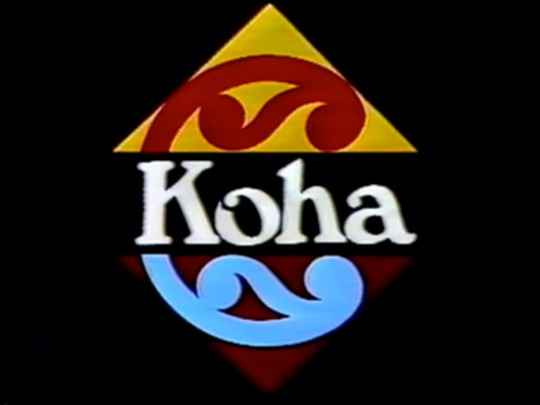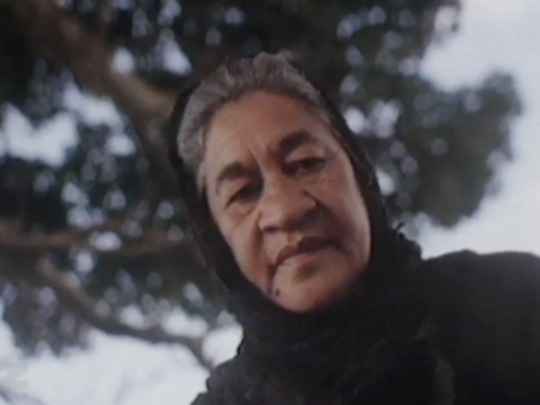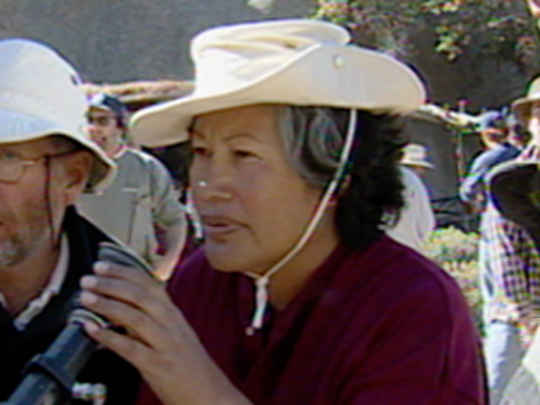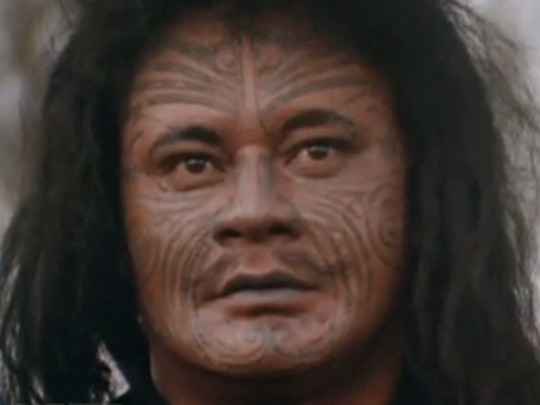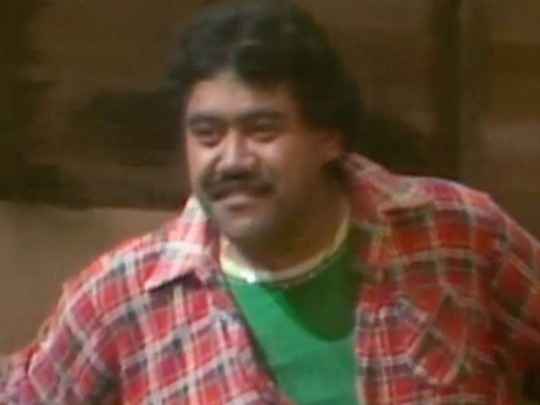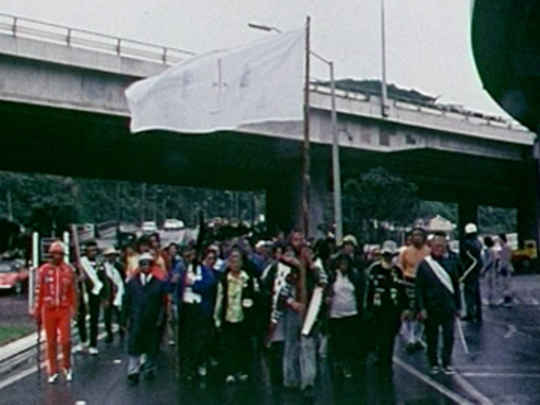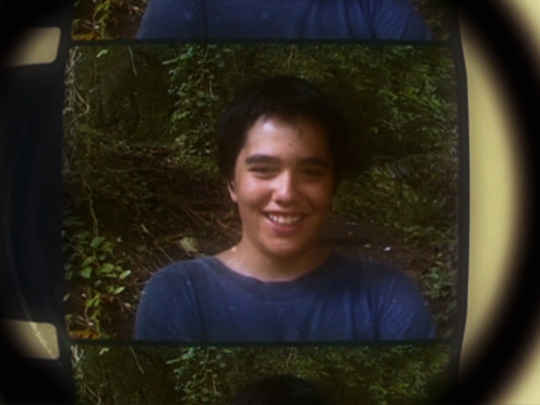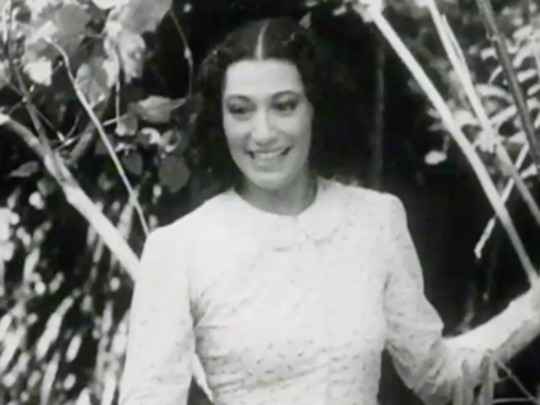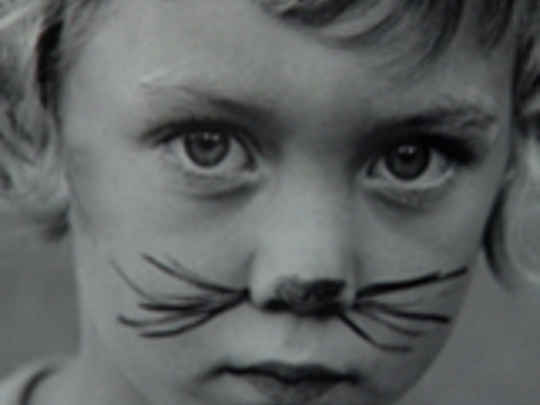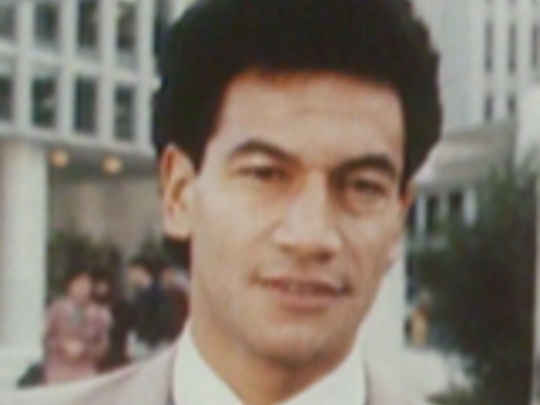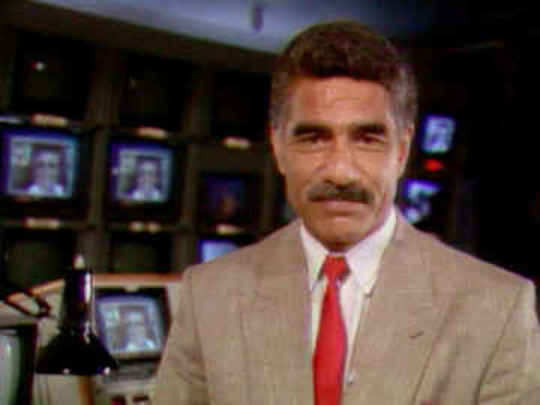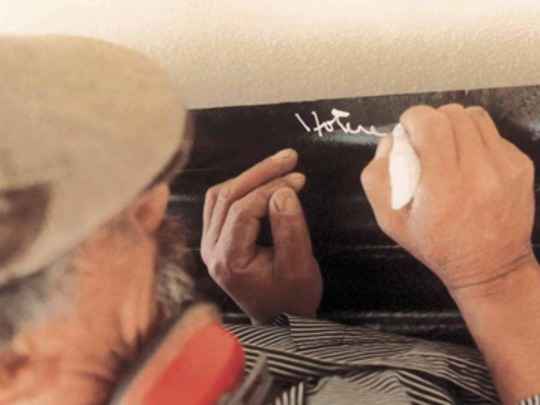This film Mauri is about birth and death, and all that takes place between. It deals with the essence of life, the essence of attraction, joy, sorrow, grief. It goes through a whole spectrum of life that Māori live...
– Writer/director Merata Mita describes her film, at the start of this report
It's a strange career this acting, isn't it.
– Cast member Eva Rickard
When I talk about mauri in terms of this film, I'm talking about that mauri which is the essence of a continuum of life, of procreation, of an ongoing thing. And as everyone knows, that comes through the female element, or through women . . . we have three female elements, each standing at some point in their lives.
– Writer/director Merata Mita on the three female characters on Mauri
...they've taught me patience, they've taught me caring, they've taught me love . . . they have a quiet discipline that I'm sure all our young people can learn from.
– Actor Anzac Wallace pays tribute to Te Whānau-ā-Apanui elders who acted in the film
The film is set in the late 1950s with the rugged East Coast of New Zealand making spectacular background. Most of the filming has taken place around the Te Kaha area, down to Cape Runaway Potaka. The land is a very important aspect of this film.
– Reporter Temuera Morrison
What we see in films in New Zealand is a kind of a white, neurotic middle class look at life in New Zealand. What we are missing is the breadth and depth of Māoritanga, of our culture. Now we talk about shared history, but what we see on the screen is only the dominant, white, monocultural perspective on life . . . We need to see our own people up there. We need to be able to identify with our own race. We need to see each other up there, and we need to go out and do it.
– Writer/director Merata Mita on the importance of Māori representation on screen
...we must continue to make films. Only by doing that can you continue to train Māori people to take positions on film crews — you know, the power positions, like behind the camera, running the sound department, editing and so on. At the moment we have none, or very few. And the few we have have been trained in television.
– Writer/director Merata Mita on the challenges and importance of getting more Māori behind the camera
...for me this film had to happen, had to happen in this time. And it's come not too late — come at the right time.
– Cast member Eva Rickard
[Filming was] littered with people who were obstructive, racist, arrogant and of little or no use to the production. In fact, when we booted the whole lot out things went a lot better. We saved so much money.
– Merata Mita describes the making of Mauri in The Auckland Star, 23 June 1987, page B1
She says Pākehā technicians were brought in to satisfy the demands of the Film Commission and investors who wanted assurance the film's technical quality would be up to scratch. She adds with satisfaction a full 33 of the 53 strong crew were Māori in spite of the demands of the film's backers.
– Writer Phil Twyford interviews Merata Mita in The Auckland Star, 23 June 1987, page B1
We had a number of young Māori people working on the film crew. . . . what you gain from Māori people is an incredible intensity and passion about the work being done. From a professional crew you get professionalism. From a Māori crew you get passion. Because it's a chance in a million, it's a chance that's never offered to them by many Pākehā directors. They've got to get out there and make something of themselves and prove to themselves that they're capable of doing the job if they have the same opportunity. The success of our trainees of Mauri has made it worthwhile.
– Merata Mita, in an interview with Cushla Parekowhai, Illusions 9, December 1988, page 22

